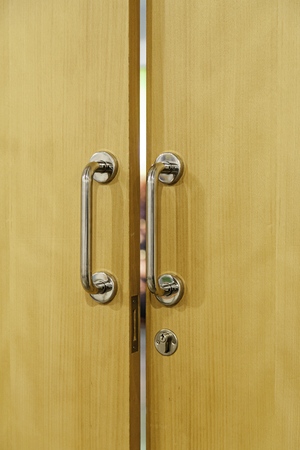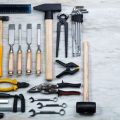1. Understanding Common Cabinet Refacing Problems
Cabinet refacing is a popular and cost-effective way to give your kitchen or bathroom a fresh new look without the hassle of a full remodel. However, like any home improvement project, it’s not without its potential problems. If not done correctly or with the right materials, homeowners may encounter issues like warping, peeling, bubbling, and material separation. Understanding these common problems can help you avoid them from the start.
Warping
Warping occurs when cabinet doors or veneers bend or twist out of shape. This usually happens due to excessive moisture, heat exposure, or poor-quality materials. Kitchens and bathrooms are high-humidity areas, so choosing materials that can withstand temperature and moisture changes is key.
Peeling
Peeling is one of the most common complaints after cabinet refacing. It typically involves the veneer or laminate separating from the cabinet surface. This can be caused by weak adhesives, improper installation, or moisture penetration over time.
Bubbling
Bubbling happens when air pockets form under the laminate or veneer, creating raised areas on the surface. This is often a result of poor adhesive application or trapped moisture during installation.
Material Separation
This refers to visible gaps or splits between layers of refaced materials—such as between the veneer and the underlying wood. Its usually due to thermal expansion and contraction or using incompatible materials.
Common Cabinet Refacing Issues at a Glance
| Issue | Description | Main Causes |
|---|---|---|
| Warping | Cupboard doors twist or bend | Moisture exposure, heat, low-quality materials |
| Peeling | Veneer comes off cabinet surface | Poor adhesive, humidity, improper prep |
| Bubbling | Raised bubbles on surface finish | Trapped air/moisture, bad adhesive job |
| Material Separation | Layers of material pulling apart | Temperature shifts, mismatched materials |
The good news is that many of these issues can be avoided by understanding their root causes and working with experienced professionals who use quality materials and proper installation methods. In the next section, we’ll explore how to choose the right materials to prevent these common problems from happening in the first place.
2. Choosing the Right Materials for Durability
When it comes to avoiding common cabinet refacing issues like warping, peeling, and cracking, selecting the right materials is key. In the diverse climate of the U.S., where humidity, heat, and daily wear can take a toll on cabinetry, some materials hold up much better than others. Let’s break down three popular options: veneers, laminates, and thermofoil — each with its own strengths and weaknesses.
Understanding Cabinet Refacing Materials
Here’s a quick look at how these materials perform in terms of durability, especially against moisture and heat:
| Material | Pros | Cons | Best For |
|---|---|---|---|
| Veneers | – Natural wood look – Can be stained or painted – Eco-friendly if using real wood |
– Prone to warping in high humidity – Requires sealing and maintenance – Can peel over time if not properly installed |
Dry climates or controlled indoor environments where aesthetics are a priority |
| Laminates (High-Pressure) | – Highly durable – Resistant to scratches and moisture – Wide variety of colors and finishes |
– Edges may chip over time – Limited repair options if damaged – Not as warm-looking as real wood |
Kitchens with heavy use or high humidity levels |
| Thermofoil | – Smooth finish that mimics paint – Budget-friendly – Easy to clean |
– Sensitive to heat (can peel near ovens) – Difficult to repair if damaged – Less breathable material |
Budget-conscious homeowners in moderate climates away from direct heat sources |
Tips for Making the Right Choice
- Climate matters: If you live in a humid area like Florida or Louisiana, avoid real wood veneers unless your kitchen has excellent ventilation.
- Kitchen layout: Cabinets close to ovens or dishwashers should steer clear of thermofoil due to heat sensitivity.
- Daily usage: Homes with kids or frequent cooking might benefit most from high-pressure laminates for their durability.
Pro Tip:
If youre unsure which material suits your home best, ask your contractor for samples you can test near heat sources or under moisture exposure before committing to a full refacing project.
Selecting the right materials can prevent many common cabinet refacing issues and save you from costly repairs down the road. Focus on what works best for your local climate and lifestyle to get the most out of your investment.

3. Proper Surface Preparation and Installation Techniques
One of the most common causes of cabinet refacing issues—like warping, peeling, or bubbling—is poor surface preparation and improper installation. To make sure your cabinet refacing project lasts for years without problems, it’s crucial to start with a clean, smooth, and level base.
Why Surface Preparation Matters
If the original cabinet surfaces are not properly prepared before applying veneers or new materials, the adhesives may not bond correctly. Over time, this can lead to peeling corners, bubbling surfaces, or uneven finishes. Below is a simple breakdown of what should be done before installation:
| Step | Description | Why It Matters |
|---|---|---|
| Cleaning | Remove grease, dirt, and dust from all cabinet surfaces using a degreaser or mild cleaner. | Dirt and grime can prevent adhesive from sticking properly. |
| Sanding | Lightly sand the surface to remove gloss and create a texture for better adhesion. | Sanding helps new materials grip the cabinet surface securely. |
| Leveling | Ensure all surfaces are flat and any dents or damage are filled in with wood filler. | Uneven surfaces can cause warping or visible imperfections later on. |
The Role of Skilled Installers
Even if the prep work is done right, the final outcome depends heavily on the installer’s skill level. Hiring experienced professionals who follow U.S. industry best practices can make a huge difference. Trained installers know how to apply veneers evenly, use high-quality adhesives designed for local climate conditions, and ensure that every detail—from edge banding to hardware alignment—is done right.
Tips for Hiring the Right Installer
- Ask about experience: Look for installers who specialize in cabinet refacing and have at least a few years of hands-on experience.
- Check references and reviews: Online reviews and word-of-mouth recommendations can tell you a lot about their reliability and quality of work.
- Verify certifications: Professionals certified by national organizations like NARI (National Association of the Remodeling Industry) often follow strict standards.
- Get everything in writing: Make sure your contract includes detailed descriptions of materials, labor, timelines, and warranties.
A strong foundation—both in surface prep and skilled labor—can help you avoid common refacing problems and enjoy beautiful cabinets that hold up over time.
4. Environmental Factors and How to Minimize Risk
When it comes to cabinet refacing, the environment in your home plays a major role in how long your cabinets will last. Warping, peeling, and other common issues often stem from poor control of humidity, kitchen layout problems, and inadequate ventilation. Understanding these factors can help you protect your investment and keep your cabinets looking great for years.
Humidity: The Silent Cabinet Killer
Too much moisture in the air can cause cabinet materials to swell, warp, or peel—especially if youre using wood veneers or thermofoil finishes. On the other hand, very dry conditions can lead to cracking or shrinking. Maintaining a stable indoor humidity level is key.
Recommended Indoor Humidity Levels
| Season | Ideal Humidity Level | Why It Matters |
|---|---|---|
| Winter | 30% – 40% | Prevents cracking and shrinkage of cabinet surfaces |
| Summer | 40% – 50% | Reduces risk of swelling and warping due to excess moisture |
Kitchen Layout: Planning for Protection
The placement of appliances like dishwashers, ovens, and sinks can impact nearby cabinetry. Heat and steam from these sources can cause deterioration over time if cabinets arent properly shielded or spaced.
Tips for a Cabinet-Friendly Layout
- Avoid placing cabinets directly above ranges or ovens without a range hood.
- Use heat shields between appliances and adjacent cabinets.
- Ensure theres enough space between sinks and surrounding cabinetry to prevent water damage.
Ventilation: Keep Air Moving
A well-ventilated kitchen helps manage both temperature and humidity levels. This is especially important in homes located in humid climates like Florida or coastal California. Without proper airflow, moisture builds up quickly—leading to mold growth and cabinet delamination.
Effective Ventilation Strategies
- Install an exhaust fan or range hood that vents outside the home.
- Open windows when cooking to let out steam and heat.
- Use ceiling fans or portable fans to circulate air during high-humidity days.
Quick Tip:
If youre unsure about the humidity levels in your kitchen, consider using a hygrometer—a small device that measures indoor humidity. Theyre affordable and easy to find at most hardware stores across the U.S.
By paying attention to these environmental elements, American homeowners can significantly reduce the chances of cabinet refacing problems like warping and peeling. A little prevention goes a long way in keeping your kitchen beautiful and functional.
5. Maintenance Tips to Extend the Life of Refaced Cabinets
Keeping your refaced cabinets looking fresh and damage-free for years doesnt have to be hard. With just a little routine care, you can avoid common problems like warping, peeling, and bubbling that often show up in American homes due to everyday wear and tear or moisture issues. Here are some simple tips to help protect your investment.
Clean Gently and Regularly
Refaced cabinets can lose their charm if not cleaned properly. Skip the harsh chemicals and go for mild soap and water instead. Use a soft cloth or sponge—never anything abrasive. Harsh cleaners can break down the adhesive and finish, leading to peeling or discoloration.
Recommended Cleaning Routine
| Task | Frequency | Tools/Products |
|---|---|---|
| Dusting cabinet surfaces | Weekly | Microfiber cloth |
| Wiping with mild soap solution | Bi-weekly or as needed | Mild dish soap + warm water, soft sponge |
| Cleaning handles and edges | Weekly | Damp cloth + mild cleaner |
Watch for Early Signs of Wear
Catching problems early can save you from costly repairs down the line. Look for edges starting to lift, corners that feel loose, or changes in texture on the surface. If you spot any of these signs, lightly press down on lifting areas using a warm cloth to reactivate adhesive—or call a pro before it gets worse.
Quick Inspection Checklist
| Issue to Check For | What It Could Mean | Action Needed |
|---|---|---|
| Lifting edges or corners | Poor adhesion or moisture exposure | Use gentle heat to reset; contact installer if needed |
| Bubbling or warping surface | Moisture trapped under laminate or veneer | Improve ventilation; repair affected panels quickly |
| Dull or sticky finish | Buildup of grease or cleaning residue | Clean with warm soapy water; avoid waxy sprays |
Avoid Moisture Buildup at All Costs
Kitchens and bathrooms are hot zones for humidity, which is one of the top reasons refacing jobs start to fail. Always use exhaust fans when cooking or showering. Don’t let water sit too long on cabinet surfaces—wipe up spills immediately.
Tips to Reduce Moisture Impact:
- Use dehumidifiers: Especially in humid climates like Florida or along coastal areas.
- Avoid placing coffee makers or steam-producing appliances directly under upper cabinets.
- If your cabinet doors feel tacky or warped, check humidity levels inside your home.
- Add weather stripping around sink base cabinets: This helps block out excess moisture from plumbing leaks.
A little preventive maintenance goes a long way when it comes to keeping your refaced cabinets looking great. By staying consistent with cleaning, doing quick inspections, and managing moisture levels, you’ll extend their life and keep them looking like new for years in your everyday household.


